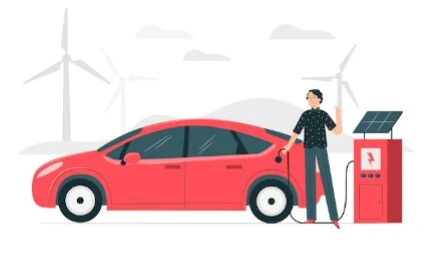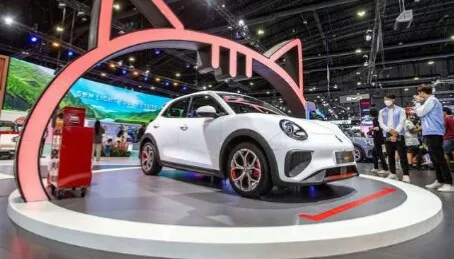Electric Vehicle
Introduction Vehicle-to-Grid (V2G) Technology
Electric vehicles (EVs) have gained popularity as a sustainable mode of transportation, but their potential extends beyond emissions reduction and energy efficiency.
Vehicle-to-Grid (V2G) technology is revolutionizing the electric mobility landscape by transforming EVs into mobile energy storage units.
With V2G technology, EVs can not only consume electricity but also feed surplus energy back into the power grid, offering a range of benefits to both vehicle owners and the grid. In this article, we will explore the potential and impact of Vehicle-to-Grid technology.
Vehicle-to-Grid (V2G) Technology
| Feature | V2G Technology |
|---|---|
| Definition | A technology that enables electric vehicles to act as bidirectional energy storage systems, capable of both charging from the grid and discharging energy back into the grid. |
| Benefits | Grid stabilization, demand response, energy storage, and revenue generation for vehicle owners. |
| Applications | Peak load management, frequency regulation, and emergency power supply. |
| Technology | Requires bidirectional chargers and advanced battery management systems. |
| Challenges | Battery degradation, grid integration complexities, and economic viability. |
| Future Potential | V2G technology is expected to play a crucial role in the integration of renewable energy sources and the development of smart grids. |
Explore Vehicle-to-Grid (V2G) Technology
The Concept of Vehicle-to-Grid (V2G) Technology
Vehicle-to-Grid technology enables bidirectional energy flow between EVs and the power grid. Traditionally, EVs have been seen as consumers of electricity, drawing power from the grid to charge their batteries. With V2G technology, EVs equipped with the necessary hardware and software can also serve as mobile energy storage systems, allowing them to supply electricity back to the grid during periods of high demand or when renewable energy generation fluctuates.
Grid Stabilization and Energy Resilience
V2G technology offers grid stabilization and enhances energy resilience. By utilizing the stored energy in EVs, grid operators can balance fluctuations in electricity supply and demand, especially during peak load periods. EVs connected to the grid through V2G can act as decentralized energy resources, helping to smooth out the intermittent nature of renewable energy sources and reducing the need for traditional power plants to compensate for grid imbalances.
Demand Response and Energy Management
V2G technology facilitates demand response programs and efficient energy management. EV owners can participate in demand response initiatives by allowing their vehicles to discharge stored energy back into the grid during peak demand periods, in exchange for financial incentives or reduced electricity costs. This flexibility in energy management helps to optimize grid operations, reduce stress on power infrastructure, and create a more resilient and sustainable energy system.
Grid Ancillary Services
V2G-enabled EVs can provide valuable ancillary services to the grid. These services include frequency regulation, voltage support, and reactive power control. By leveraging the distributed energy storage capacity of EVs, grid operators can rely on them as dynamic resources to help maintain grid stability and reliability. The utilization of V2G technology contributes to a more efficient utilization of existing grid infrastructure, potentially reducing the need for costly grid upgrades.
Cost Savings and Revenue Generation
V2G technology opens up new avenues for cost savings and revenue generation for EV owners. Through participation in grid services and demand response programs, EV owners can monetize the energy stored in their vehicles. This not only offsets the cost of EV ownership but also enhances the overall value proposition of electric mobility. V2G-enabled EVs offer the potential for owners to turn their vehicles into revenue-generating assets while supporting the transition to a sustainable energy system.
Vehicle-to-Grid (V2G) Latest Technology
Vehicle-to-Grid (V2G) technology was already a well-established concept, but ongoing developments might have occurred since then.
V2G technology enables electric vehicles (EVs) to not only consume energy from the grid but also send surplus energy back to the grid when parked and connected to a charging station.
This two-way communication between the vehicle and the grid opens up new possibilities for optimizing energy usage and enhancing grid stability.
Here are some key aspects of V2G technology:
1. Energy Storage and Grid Stabilization: V2G-enabled EVs can act as mobile energy storage units, allowing excess electricity generated from renewable sources or during off-peak hours to be stored in the vehicle's battery. This stored energy can be discharged back to the grid during peak demand periods, helping to stabilize the grid and balance electricity supply and demand.
2. Demand Response: V2G technology enables grid operators to control the charging and discharging of EVs based on grid conditions and electricity demand. By managing charging and discharging patterns, V2G can be utilized to support demand response initiatives, reduce strain on the grid, and prevent blackouts during peak periods.
3. Grid Services and Ancillary Markets: V2G-capable EVs can participate in various grid services and ancillary markets, such as frequency regulation, load shifting, and peak shaving. These services provide economic incentives for EV owners while contributing to grid stability and efficiency.
4. Energy Cost Optimization: With V2G technology, EV owners can take advantage of dynamic electricity pricing. They can charge their vehicles when electricity prices are low and sell excess energy back to the grid when prices are high, potentially reducing their overall energy costs.
5. Environmental Benefits: By integrating V2G technology and utilizing more renewable energy sources, the electricity grid can become cleaner and more sustainable, reducing greenhouse gas emissions and contributing to environmental conservation.
6. Battery Health and Longevity: Proper management of charging and discharging through V2G can also benefit the health and longevity of EV batteries. Careful control of charging rates and depth of discharge can extend battery life and performance.
Challenges and Considerations
While V2G technology holds great promise, some challenges and considerations need to be addressed for its widespread implementation:
1. Battery Degradation: Frequent charging and discharging can impact the lifespan of EV batteries. Proper battery management strategies are necessary to minimize degradation.
2. Standardization: V2G technology requires standardization to ensure interoperability between different vehicles and charging infrastructure.
3. Grid Compatibility: Grid infrastructure needs to be upgraded to accommodate bidirectional power flow and manage the potential impact of V2G on local grids.
4. User Participation: Encouraging EV owners to participate in V2G programs may require incentives and education about the benefits and potential risks.
V2G technology continues to evolve, ongoing research and pilot projects are likely to address these challenges and promote the integration of electric vehicles as active participants in the future smart grid.
Conclusion Vehicle-to-Grid (V2G) Technology
Vehicle-to-Grid (V2G) technology represents a paradigm shift in the electric mobility landscape, transforming EVs from mere consumers of electricity to active participants in the energy ecosystem.
The bidirectional flow of energy between EVs and the power grid enables grid stabilization, demand response, and the provision of valuable ancillary services. V2G technology offers EV owners the opportunity to generate revenue, reduce energy costs, and contribute to a more sustainable and resilient energy system. As V2G infrastructure and adoption continue to grow, the potential for a dynamic and interconnected energy ecosystem powered by electric vehicles becomes increasingly feasible.
With V2G technology, the electric mobility revolution extends far beyond transportation, paving the way for a greener, smarter, and more efficient energy future.



